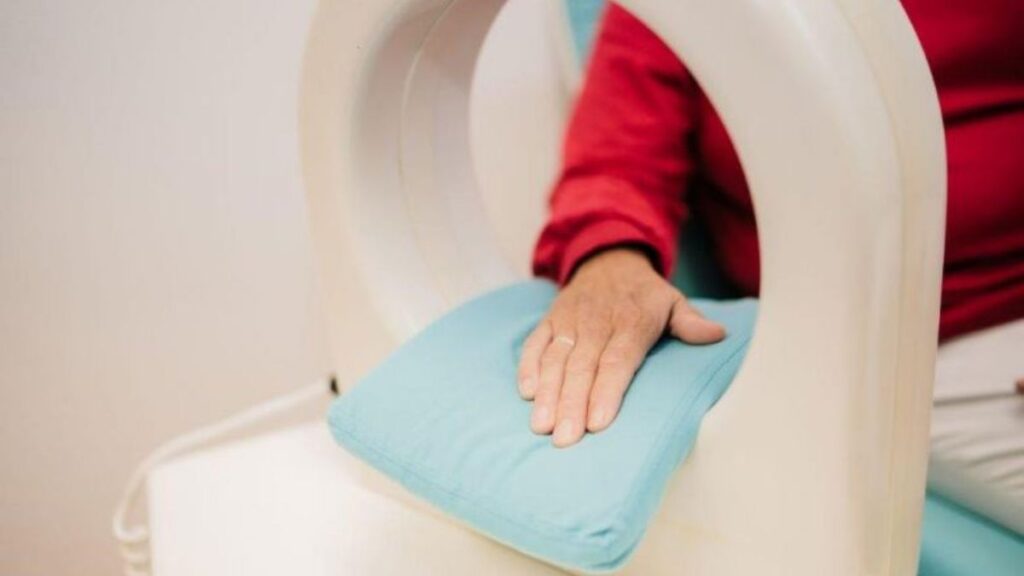Are you tired of dealing with nagging pain or struggling to find a holistic approach to your health? If so, you might want to explore an innovative treatment making waves in the wellness community: pulsierende Signal Therapie. This intriguing therapy harnesses the power of pulsed electromagnetic fields, offering potential benefits that go beyond just alleviating discomfort. As more people seek alternatives to traditional medicine, understanding what PST is and how it works can help you decide if this could be the missing piece in your journey toward better health. Join us as we dive into the evidence surrounding pulsierende Signal Therapie and uncover whether it’s right for you.
What is Pulsierende Signal Therapie (PST)?
Pulsierende Signal Therapie, or PST, is a non-invasive treatment designed to promote healing and enhance overall wellness. Utilizing low-frequency electromagnetic fields, this therapy aims to stimulate cellular processes within the body.
The concept behind PST revolves around the idea that our cells communicate through electrical signals. When these signals are disrupted due to injury or illness, it can hinder recovery. By delivering targeted pulses of energy, PST seeks to restore this communication and encourage natural healing mechanisms.
This innovative approach has gained traction in alternative medicine circles as a way to address various health issues without pharmaceuticals. With an emphasis on promoting balance within the body, many individuals find hope in its potential benefits for both physical and mental well-being.
The Science behind PST
Pulsierende Signal Therapie (PST) operates on the principles of bioelectromagnetism. It utilizes specific frequencies to stimulate cellular repair and regeneration. This technology works by delivering low-frequency signals, which penetrate tissues and promote healing.
Research indicates that these pulsating signals enhance blood circulation. Improved circulation can lead to better oxygenation of cells, aiding overall wellness. Additionally, PST has demonstrated potential in reducing inflammation—an essential factor in many chronic conditions.
The therapy encourages cellular communication, enabling cells to function more efficiently. By targeting specific areas with precise frequencies, it optimizes the body’s natural processes.
Many studies are underway to further understand how PST interacts with various bodily systems. As awareness grows about its mechanisms, individuals may find new hope for alternative treatments tailored to their health needs.
Benefits of PST for Overall Health and Wellness
Pulsierende Signal Therapie (PST) offers a range of benefits that can enhance your overall health and wellness. This innovative therapy utilizes electromagnetic signals to stimulate cellular function, promoting healing at the most fundamental level.
One notable advantage is its ability to reduce inflammation. By targeting affected areas, PST helps alleviate pain and promotes quicker recovery from injuries or chronic conditions.
Many individuals also report improved energy levels after incorporating PST into their routine. The therapy enhances circulation, ensuring vital nutrients reach cells more efficiently.
Mental clarity is another significant benefit. Users often find that PST aids in reducing stress and anxiety, leading to a calmer mindset.
Additionally, regular sessions may support better sleep patterns. As relaxation deepens during treatment, many experience enhanced restfulness at night. This cumulative effect fosters an overall sense of well-being you can feel throughout your day-to-day life.
Conditions that Can Benefit from PST
Pulsierende Signal Therapie (PST) shows promise for various health conditions. Many individuals seek relief from chronic pain, and PST may offer a non-invasive option to alleviate discomfort.
Athletes often turn to this therapy for muscle recovery. The gentle pulses can enhance circulation, potentially speeding up healing after intense physical activity.
Those dealing with joint issues or arthritis have also found benefits. By reducing inflammation, PST might help improve mobility and lessen stiffness in affected areas.
Stress management is another area where PST shines. Its calming effects may support mental wellness by promoting relaxation and reducing anxiety levels.
Even patients undergoing rehabilitation for injuries report positive outcomes. The therapy’s ability to stimulate repair processes could play a role in faster recovery times across multiple injury types.
How to Incorporate PST into Your Routine
Incorporating pulsierende signal therapie into your daily routine can be straightforward. Start by selecting a dedicated time for your sessions, ideally when you’re most relaxed.
You might choose morning or evening. Consistency helps build the habit. Make it part of your self-care rituals, like meditation or stretching.
Consider using a portable device that fits seamlessly into your life. This allows for use at home, work, or even while traveling.
Many find it beneficial to pair PST with other wellness activities such as yoga or deep breathing exercises to enhance relaxation effects.
Listen to your body and adjust the frequency and duration of each session based on how you feel. Keeping track of any changes in mood or health can also guide future adjustments.
Remember that patience is key; results may take time to manifest fully.
Potential Risks and Precautions to Consider
While Pulsierende Signal Therapie offers numerous benefits, it’s essential to recognize potential risks. Some individuals may experience mild side effects such as temporary discomfort or fatigue after sessions.
People with certain medical conditions should consult a healthcare professional before starting PST. This includes those with pacemakers or other implanted devices, as electromagnetic fields could interfere with their operation.
Pregnant women and individuals diagnosed with serious health issues should also approach PST cautiously. Always ensure that the therapy is administered by qualified practitioners who follow safety protocols.
Monitoring your body’s response during treatment is crucial. If any adverse reactions occur, it’s important to discontinue use immediately and seek medical advice.
Being informed about these precautions helps you make safe choices regarding your health journey without unnecessary risks involved in adopting new therapies like pulsierende signal therapie.
Conclusion: Is PST the Right Choice for You?
Considering the potential benefits and applications of Pulsierende Signal Therapie, it’s essential to weigh your options carefully. This therapy presents a promising avenue for those seeking alternative or complementary treatments for various health conditions.
If you’re experiencing chronic pain, sleep disturbances, or stress-related issues, PST might be worth exploring. It’s crucial to consult with healthcare professionals who can guide you based on your personal health history and current medical needs. Every individual is different; what works wonders for one person may not have the same effect on another.
Take time to research and understand how pulsierende signal therapie fits into your wellness journey. Whether you’re curious about its science or looking at real-life success stories, being informed will empower you in making decisions that suit your lifestyle best. The choice ultimately rests with you—consider all aspects thoughtfully before embarking on this therapeutic path.






